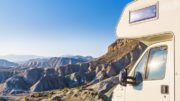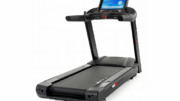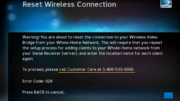There’s new information! Check out this article for more a up-to-date story.
Yes, the rumors you have heard are true. If you want certain international channels on DIRECTV, you will probably have to get a second dish. You may have thought that multiple dishes were a thing of the past, but unfortunately they have come roaring back for certain international viewers.
State of the satellite world today
Today, most of DIRECTV’s programming comes from three main satellite locations. These satellites are located about 22,000 miles above the equator, at positions roughly equal to where Texas is positioned in the US. We tend to refer to them by their longitudes. We call one group 101 because they’re clustered around 101º West, one we call 99 and one we call 103. You kind of get the idea.
For the moment, some international programming comes from a satellite located at 95º West latitude, and I’ll explain in a minute why that’s an issue.
In the past, AT&T (and before that, DIRECTV when they were separate) also operated satellites at 72.5, 110, and 119 degrees. The satellite at 119 is still operational but is getting phased out very soon. There’s very litttle national programming on it. It’s easier to aim a dish when the satellite locations are within just a few degrees of each other. Also, putting the satellites over the middle of the US makes it easier for people all over the country to get clear, uninterrupted service. Aiming too far off center increases the risk that you’ll have to deal with trees, hills, or other obstructions.
The one-dish solution
Until very recently it was possible to use a single dish for all international programming. The WorldDIRECT dish shown at the top of this article is designed to receive programming from the 95 and 101 degree locations. However, AT&T is moving aggressively away from standard definition programming and that’s what’s at the 101 location now. It’s no longer possible to get a new standard definition receiver from AT&T. People just don’t want that old technology any more.
However, there isn’t a single dish that gets signals from 95,99, 101, and 103. It could be built, but the demand isn’t really there. So for now you have to go to a two dish solution. You use the WorldDIRECT dish for your international programming, and a Reverse Band Legacy Dish or Slimline-5 dish for all your other programming. The Reverse Band dish lets you get 4K programs, but requires additional lines to be run. It’s up to you which one you choose.
Either way, you use a SWM-30 multiswitch to combine the two. If you are going to go the Reverse Band route, you’ll also need this diplexer. It’s actually pretty easy to hook up… check out this diagram.
DSWM30%20DiplexingYou don’t have to use a Genie 2, it’s just to illustrate the way a receiver would connect.
Which channels need the second dish to get programs at the 95° satellite?
Here’s a list accurate as of May 1, 2019. It comes from a volunteer group who compiles this data based on FCC listings and isn’t guaranteed accurate (although it probably is accurate.)
- ABS-CBN News Channel 2062
- ABS-CBN Sports + Action 2064
- C1RW 2140
- Carousel
- CBO
- CCTV-4 2052
- CGTN 2053
- Charming China
- Cinema One Global 2063
- CTI 2056
- CTS
- Dom Kino 2142
- DZMM 2066
- EBS
- Film 24H
- GMA Life
- GMA Pinoy TV 2061
- HONVIETV
- INCTV
- Kapatid TV5
- KBS World
- KBS World 24
- Lifestyle Network
- Little Saigon Radio Channel
- M1: Music Entertainment 2143
- MBC 2081
- MBN
- MediaSet Italia
- MHz Worldview 2183
- Myx 2067
- National Geographic Korea
- NTV America
- PFC (Portuguese)
- Phoenix Info News 2051
- Phoenix TV 2050
- Rai Italia
- Rai News 24
- Rai World Premium
- Rossiya 24
- RTR Planeta 2141
- RTVI
- S Channel
- SBS 2080
- SBS Plus 2084
- SBTN
- TAN
- TFC – The Filipino Channel 2060
- TV Globo
- TViet Network
- TVN
- VGN TV
- Vien Thao
- Viet Face
- VIETV
- Vremya: Retro Channel 2144
- YTN





